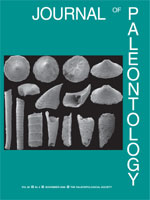A number of Early Cretaceous inoceramids are widely known worldwide, but many are poorly understood. In particular the nature of ligaments and muscle scars are in need of major revision. The inoceramid genus Neocomiceramus Pokhialainen and the species N. curacoensis (Weaver) are revised based on newly collected materials in the Neuquén Basin, west-central Argentina. Neocomiceramus curacoensis is recorded in the Agua de la Mula Member of the Agrio Formation. A Late Hauterivian age is indicated by the associated ammonite fauna. Neocomiceramus curacoensis has a shell shape similar to Inoceramus J. Sowerby, but its ligament lies in a higher angle to the commissural plane and has a smaller number of pits. Neocomiceramus curacoensis probably lived reclined and byssally attached on muddy offshore substrates under restricted oxygen levels. The genus Neocomiceramus ranges from the Valanginian?, Hauterivian to Albian and probably is cosmopolitan. It differs from other well-recognized Early Cretaceous inoceramid genera, namely Actinoceramus Meek, Anopaea Eichwald, and Coloniceramus Pokhialainen by its shell shape, shell thickness, ornamentation, and ligament morphology.
How to translate text using browser tools
1 November 2006
THE OCCURRENCE OF NEOCOMICERAMUS CURACOENSIS (WEAVER) IN THE AGRIO FORMATION, NEUQUÉN BASIN, ARGENTINA
DARIO G. LAZO
ACCESS THE FULL ARTICLE

Journal of Paleontology
Vol. 80 • No. 6
November 2006
Vol. 80 • No. 6
November 2006





